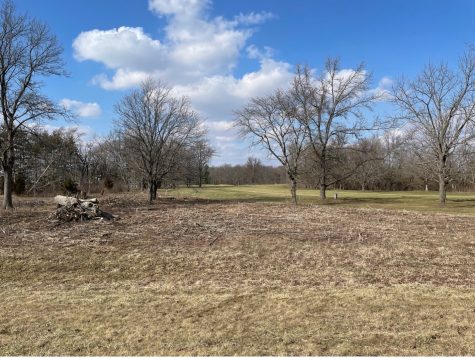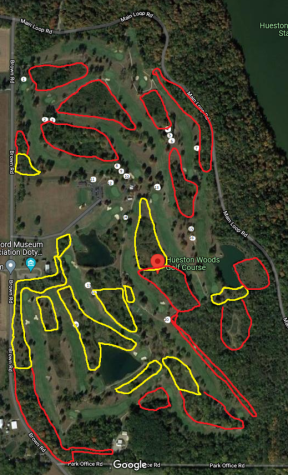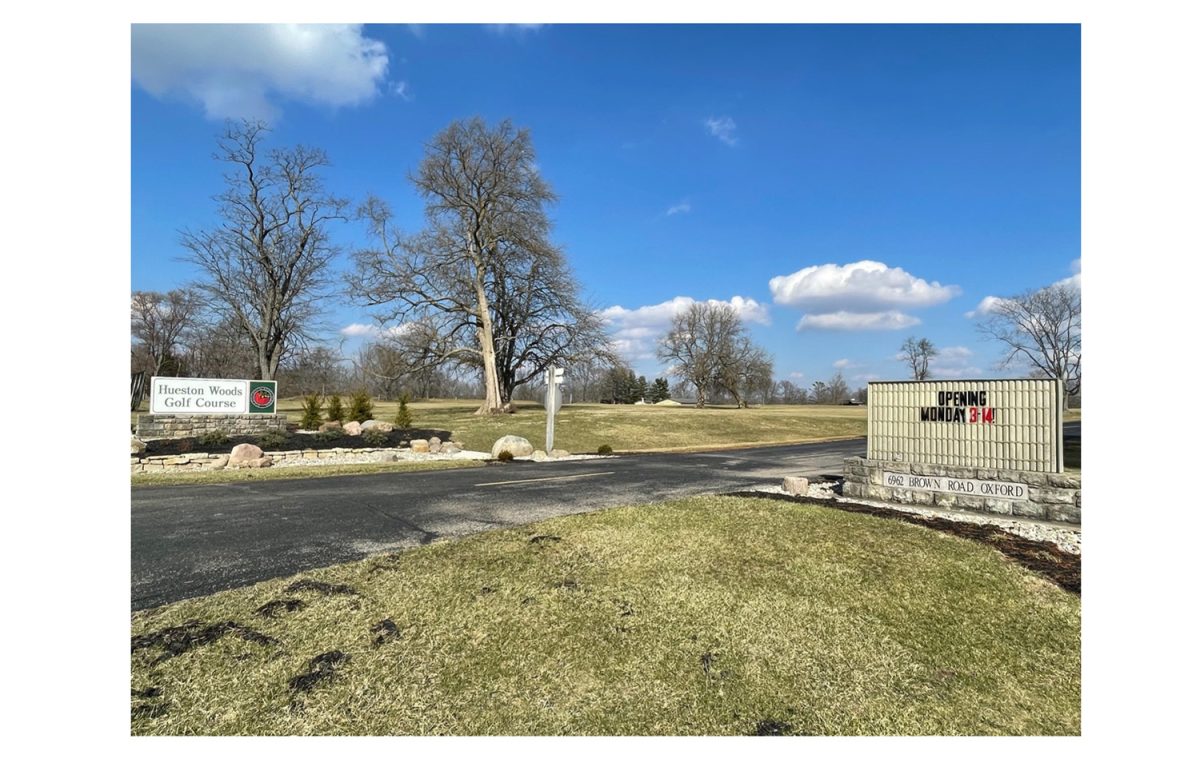Hueston Woods golf course undergoes restoration, opens Monday
Oxford citizens will still be able to enjoy rounds at Hueston Woods golf course, with the pro shop set to officially open Monday March 14.
March 11, 2022
Hueston Woods golf course is undergoing deforestation and restoration this year but is still expected to be open for regular play Monday, March 14.
Chris Dynes, who took over as superintendent of the course last May, is overseeing the restoration program. The work on the 75 acres on and around the course is expected to make the natural wildlife area healthier and the course a little more difficult, he said.
The work began shortly after Dynes took over and is expected to continue throughout 2022. He said the work may occasionally disrupt a peaceful round of golf but said it will be worth it in the end.
“Hueston Woods, after losing all the ash trees (to the Emerald Ash Borer) has lost its edge. It’s a lot easier than it used to be,” Dynes said. “Before 2012 . . . it would’ve been the hardest tree-lined public course around here.”

Dynes grew up in Oxford and remembers what the course, which opened in 1969, looked like prior to the takeover by many invasive plant species in the natural wildlife hazards across the course. The loss of nearly 600 ash trees to the Emerald Ash Borer along with invasive plant species around the course, have changed the way the course plays, making it easier for the highly skilled player than it once was, he said.
While Dynes has many ideas and plans to improve the layout of the course, the current focus is restoring hazard areas and maintaining the park’s native habitat. This maintenance is being done through the deforesting that has begun and replanting native species where needed. He said his priority is now on improving the golfing experience for the players
According to Dynes, the golf course has seen invasive species such as honeysuckle rapidly take over many of the native wildlife areas. Throughout this restoration process, he is ensuring that the work they are doing will bring the native habitat back to a healthy and thriving state.
“We push so hard with the ecology stuff because with golf courses, when it comes to (environmental) concerns, we are taught from day one that ecology is the most important thing,” said Dynes.

“We work very closely with a couple of bright conservationists that live nearby, and we work with Audubon International, so I am kind of standing on the shoulders of giants,” said Dynes. “They have a long-established history of ecology out here and I am going to try and do my best to continue that with the limited resources we have to provide the best sort of environment we can out here.”
Kathryn Connors, former naturalist and park manager of Ohio’s Hueston Woods and Sycamore state parks, is one of the people Dynes has been closely working with to make sure that the project is completed with an environmental focus.
“We are trying to make a better park for our visitors and a better park for our wildlife,” said Connors. “I really appreciate Chris’ partnership and willingness to have the same passion as I.”
According to Connors, once they can remove all the invasive species, they will be able to assess the native seed bank. This will allow them to see if native wildflowers and natural grasses will grow back on their own or need to be replanted.
“Not only is this going to be aesthetically pleasing for the golfers, but it will be really great for the wildlife,” said Connors. “It will be food sources. It will be habitat. You know it really is a win for everybody.”














